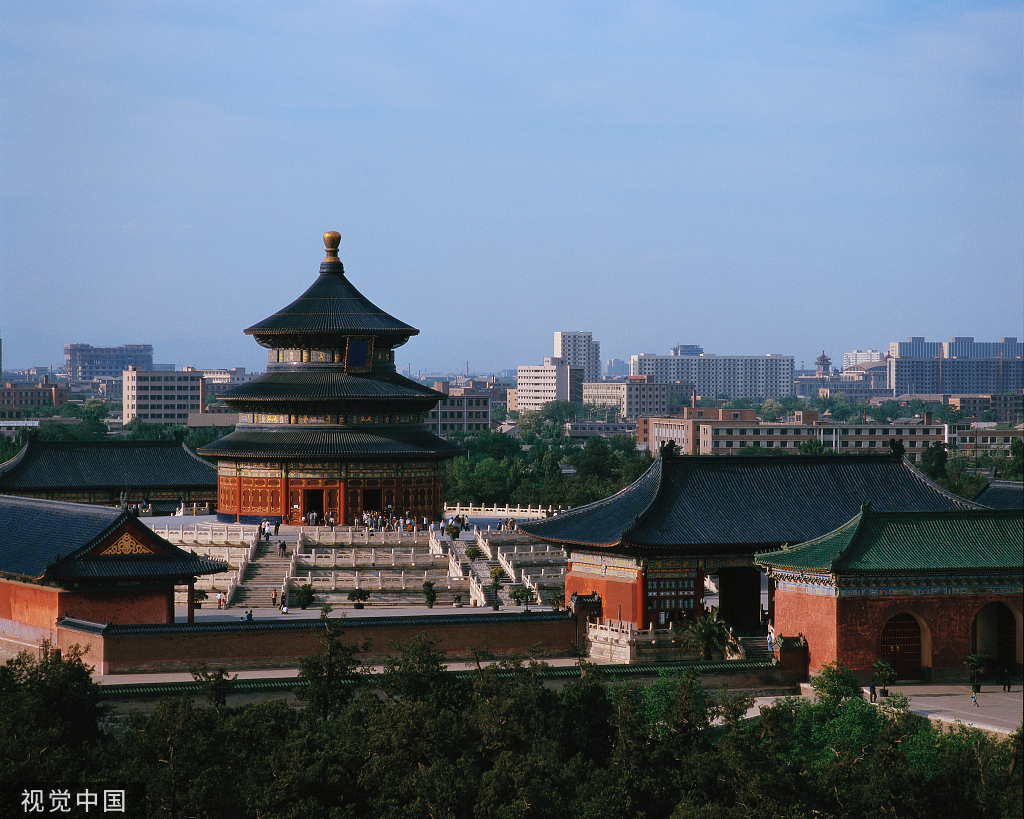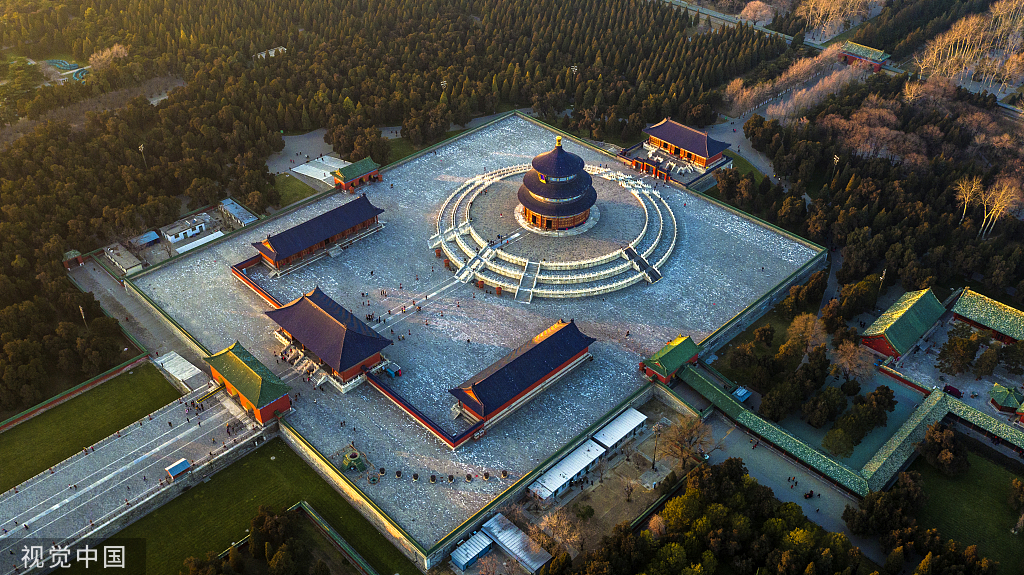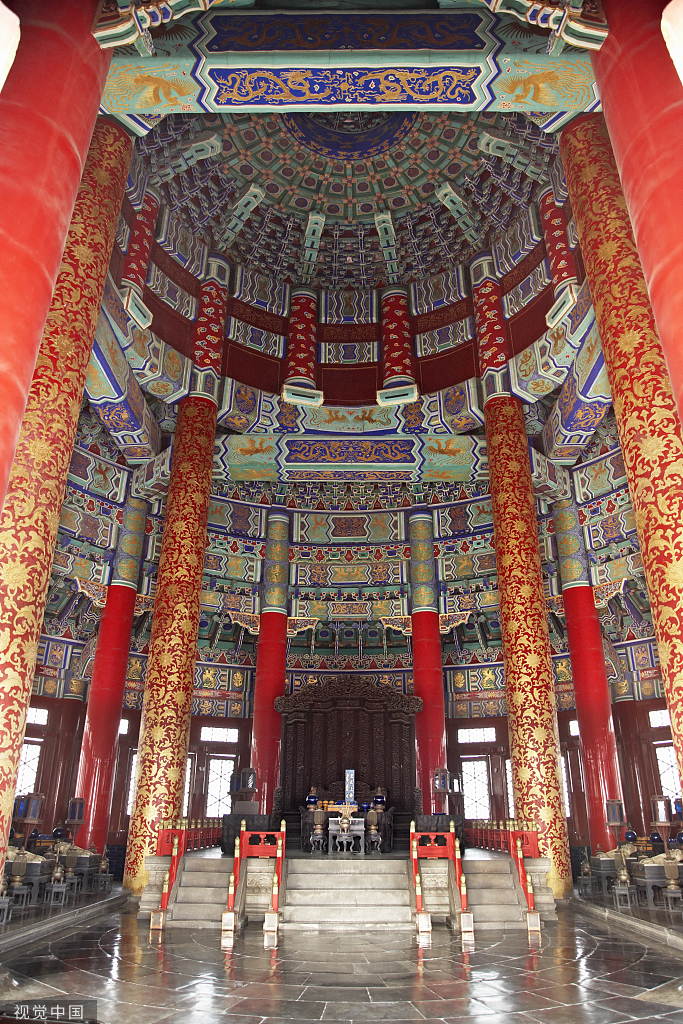Temple of Heaven


The Temple of Heaven was commissioned by the Ming Dynasty (1368-1644) Yongle emperor (r. 1403-1424) in 1420 as a site for making offerings to the god of Heaven. It is located outside the southern gate of the imperial city (or the "inner city") in the southeast. Covering an area of 273 hectares, the temple is round in its upper design and square in its lower, and is enclosed by two walls that divide it into an inner altar area and a peripheral altar area.

Architectural structures are primarily situated in the inner altar area, with the two centerpieces -- the Hall of Prayer for Good Harvests (Qinian dian) in the north and the Circular Mound (Yuan qiu) in the south -- connected by a raised path 360 meters in length, which forms a central axis of the entire layout. The Temple of Heaven is the world's largest architectural complex dedicated to heavenly worship. It was inscribed on the World Heritage List in 1998.
The Circular Mound

The circular mound was initially built up in 1530 as an altar decorated with blue-glazed tiles, and reconstructed in 1749 into a three-tiered balustraded marble terrace, the form it takes today. Diminishing in diameter from the bottom to the top, the altar was approached by stairs from the four cardinal directions. The number of the steps and bricks at each level of the terrace is either nine or a multiple of nine, a digit revered in imperial China as the largest single digit, to indicate the mightiness of Heaven.
Hall of Prayer for Good Harvests
Emperors of the Ming and Qing dynasties prayed for good harvests in the first lunar month of each year. The hall was transformed from a rectangular building to a conically-capped triple-eaved round building after its inauguration in 1420. The current building dates to the late 19th century, and is designed with symbolic cosmological meanings: the blue color of the glazed tiles of the roofs symbolizes Heaven; the four central hypostyle columns symbolize the four seasons, while the twelve others around them symbolize the twelve months, and the twelve peripheral columns symbolize the twelve two-hour periods that constitute a day. It is the only extant example of a "Bright Hall" -- an architectural style described in ancient Chinese classics that bore political significance and was dedicated to resolute rulers for sacrifices or holding of grand audiences.







